Phonation Physiology
1/46
There's no tags or description
Looks like no tags are added yet.
Name | Mastery | Learn | Test | Matching | Spaced |
|---|
No study sessions yet.
47 Terms
Functions of the larynx
Respiration
Airway protection
Thoracic fixation
Sound generation
Main laryngeal functions during speech
Voicing
Voiceless
Intonation
Vocal folds
masses that can be set into vibration; have mass and elasticity
Vocal folds abduction during quiet and forced respiration
During normal, quiet respiration, the vocal folds are abducted to provide a width of about 8 mm in the adult.
During forced respiration, the need for air causes you to dilate, or open, the respiratory tract as widely as possible, doubling that width
The effect of vocal fold mass on vibration rate?
As the mass increases, the frequency of vocal fold vibration decreases (inverse relationship)
The effect of vocal fold length on vibration rate?
Provided the same mass, shorter vocal folds have higher frequency and therefore higher pitch (inverse relationship)
Glottal configuration during production of plosives (/p/, /t/, /k/)
1- Pressurization phase
2- Release phase
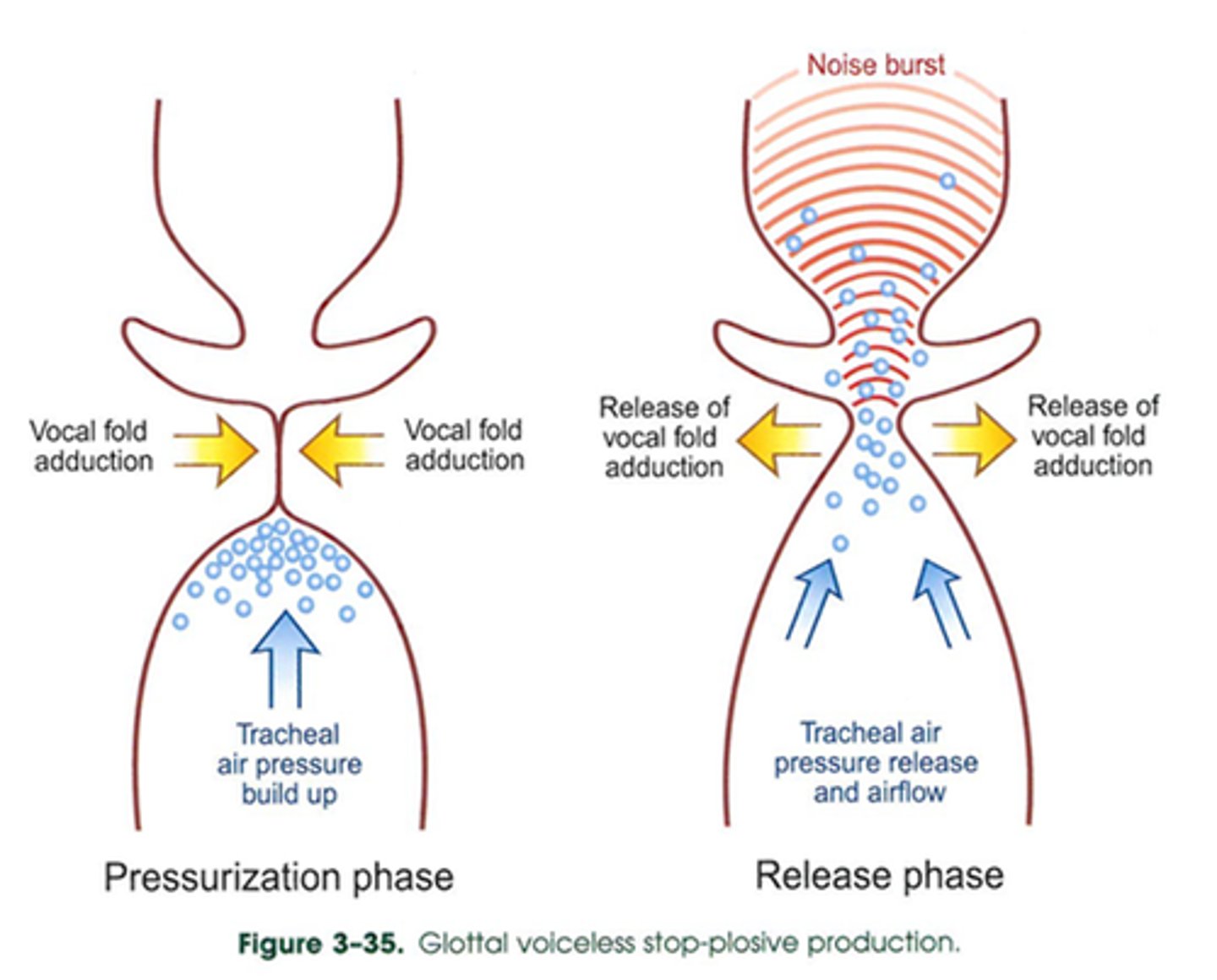
Glottal configuration during production of glottal fricatives (/h/) and whispering
1- Glottal configuration adjustment
2- Turbulent airflow
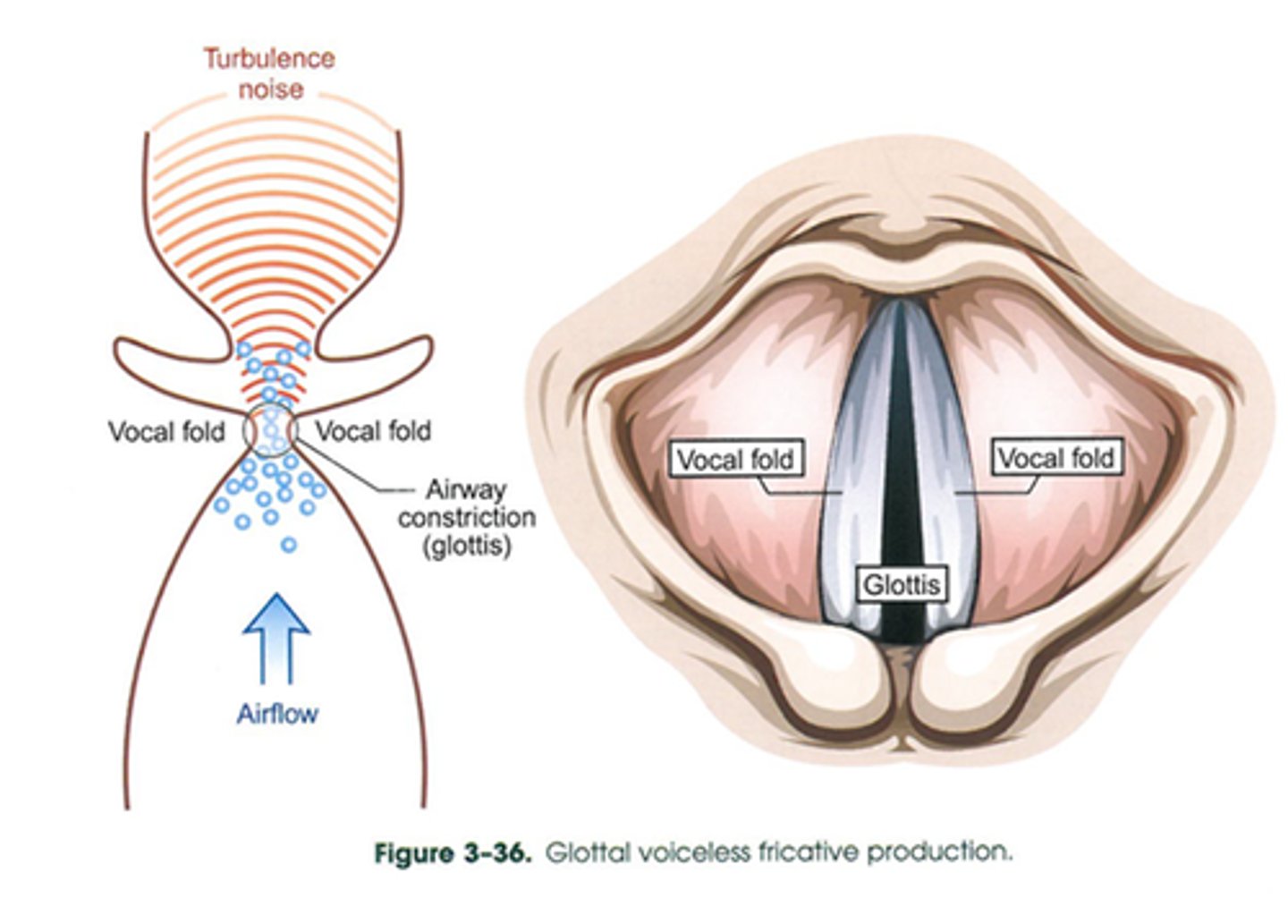
Sustained voice generation
Sustained airflow (VF opening/closing)

Elasticity
It is that property of a material that causes it to return to its original shape after being displaced.
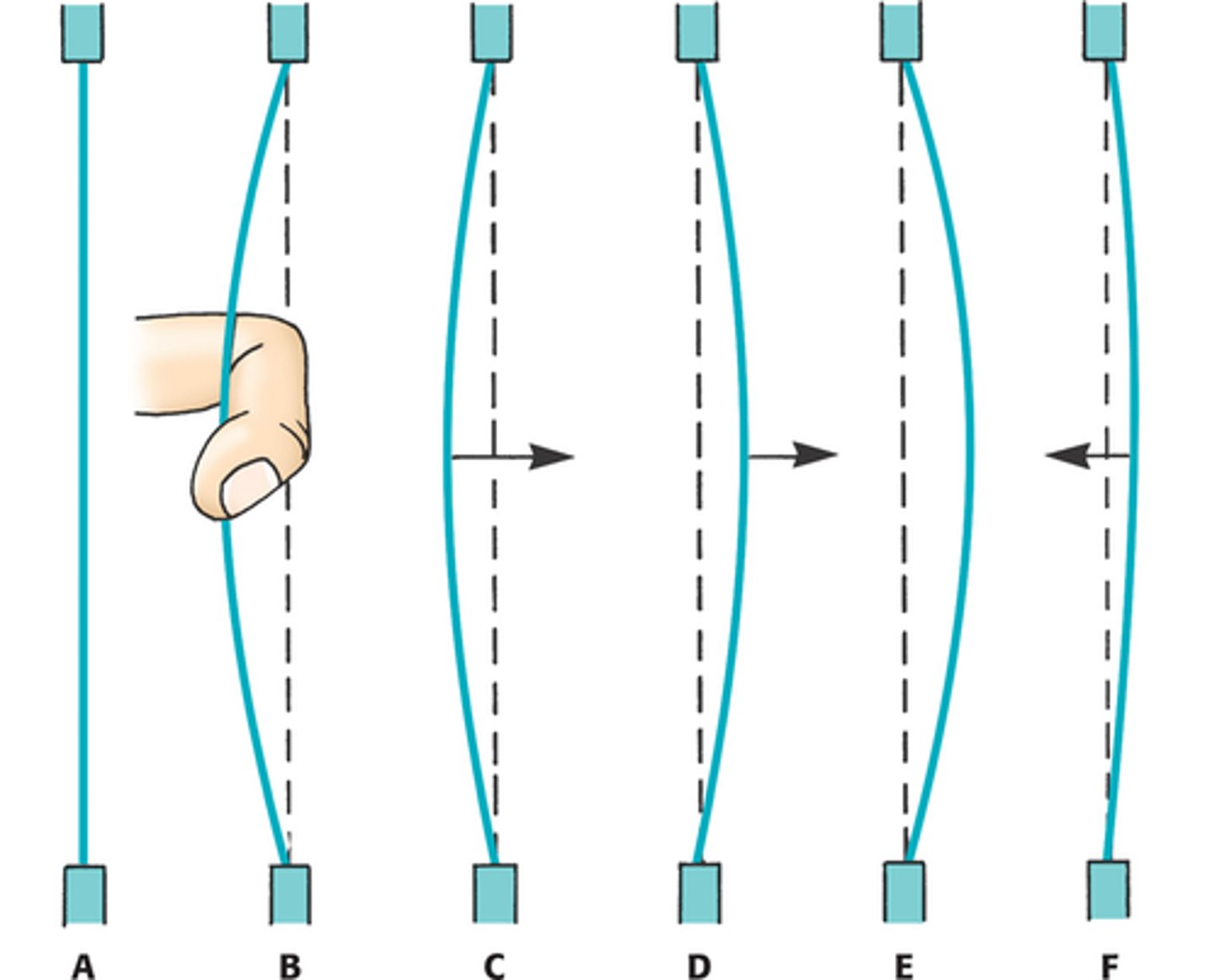
Stiffness
tterm-4he strength of elastic forces
Myoelastic Aerodynamic Theory
the vocal folds vibrate partly because of the forces and pressure of air and the elasticity of the vocal folds
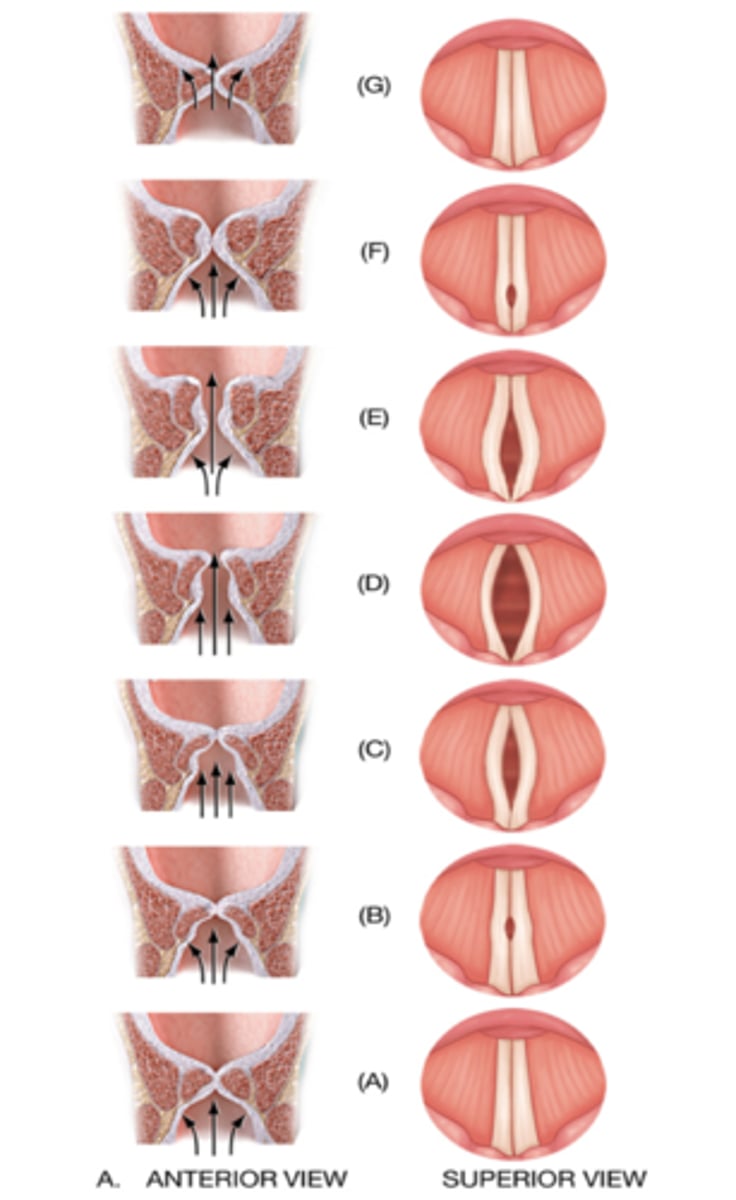
Bernoulli Effect
given a constant volume flow of air or fluid, at a point of constriction, there will be a decrease in air pressure perpendicular to the flow and an increase in velocity of the flow

inferior-superior mode of phonation
vocal folds tend to open from inferior to superior
Anterior-posterior mode of phonation
vocal folds (in addition to opening from inferior to superior) tend to open from posterior to anterior
Minimum driving pressure in modal phonation
3 to 5 cm H2O subglottal pressure
*if the pressure is lower than this, the vocal folds will not be blown apart
*a patient who cannot maintain this pressure for 5 seconds will not be able to use the vocal folds for speech
Pitch
the perceptual correlate of frequency
As frequency increases, cycles per second increase and pitch increases
Optimal pitch
the pitch (frequency) of vocal fold vibration that is optimal for an individual
varies depending on age and gender
Average optimal pitches
adult female: 230Hz
adult male: 120Hz (greater muscle mass and longer vocal folds=lower frequency)
Children: 250Hz
Infants: 800Hz
Habitual pitch
the frequency of vibration of vocal folds that is habitually used during speech
**ideally this is the same as optimal pitch
Average fundamental frequency
the average frequency of vibration of the vocal folds during some sustained phonation (eg. conversation)
Pitch range
the range of fundamental frequency for an individual
*calculated as the difference between the highest and lowest frequencies
Changeable elements of the vocal folds
1. mass - we can change the mass per unit length by spreading the muscle out over more distance
2. tension - we can stretch them tighter or relax them
3. length - elongation is what really affects the tension and mass
Cricothyroid role in fundamental frequency adjustment
it stretches the vocal folds
thyrovocalis role in fundamental frequency adjustment
contraction pulls the cricoid and the thyroid closer together
Muscles involved in changing Fo
cricothyroid: larger adjustments
Thyromuscularis: fine adjustments
Vocalis
medial portion of the thyroarytenoid
main mass of the vocal folds
tenses the vocal folds and works with the cricothyroid to stiffen the vocal folds
Thyromuscularis
origin is the thyroid and insertion is the arytenoids.
Pulls the arytenoids anteriorly to shorten the vocal folds
The effect of VF tension on pitch?
Increases pitch
The effect of VF mass on pitch?
Decreases pitch
The effect of VF length on pitch?
Decreases pitch
vocal registers
Glottal fry: lowest pitch
Modal: normal intermediate pitch
Falsetto: highest pitch
Glottal fry
Lowest F0
VF's close quickly, long closed phase of the cycle
Folds held tight together
Free edges bubble sound out
Popcorn sound
Modal register
the mode of vibration used for daily speaking
Falsetto register
Produced with elongated, tight vocal folds
The relation of subglottal pressure with intensity
There is a direct relation
Objective voice analysis
Acoustic parameters
Open quotient
Speed quotient
Subjective parameters
-hoarse
-rough
-strained
-strangled
-breathy
-male versus female
laryngoscopy
visual examination of the larynx
Two types of laryngoscopy
Direct
Indirect
Direct laryngoscopy
direct viewing of the larynx and adjacent structures by use of a laryngoscope under full anesthesia
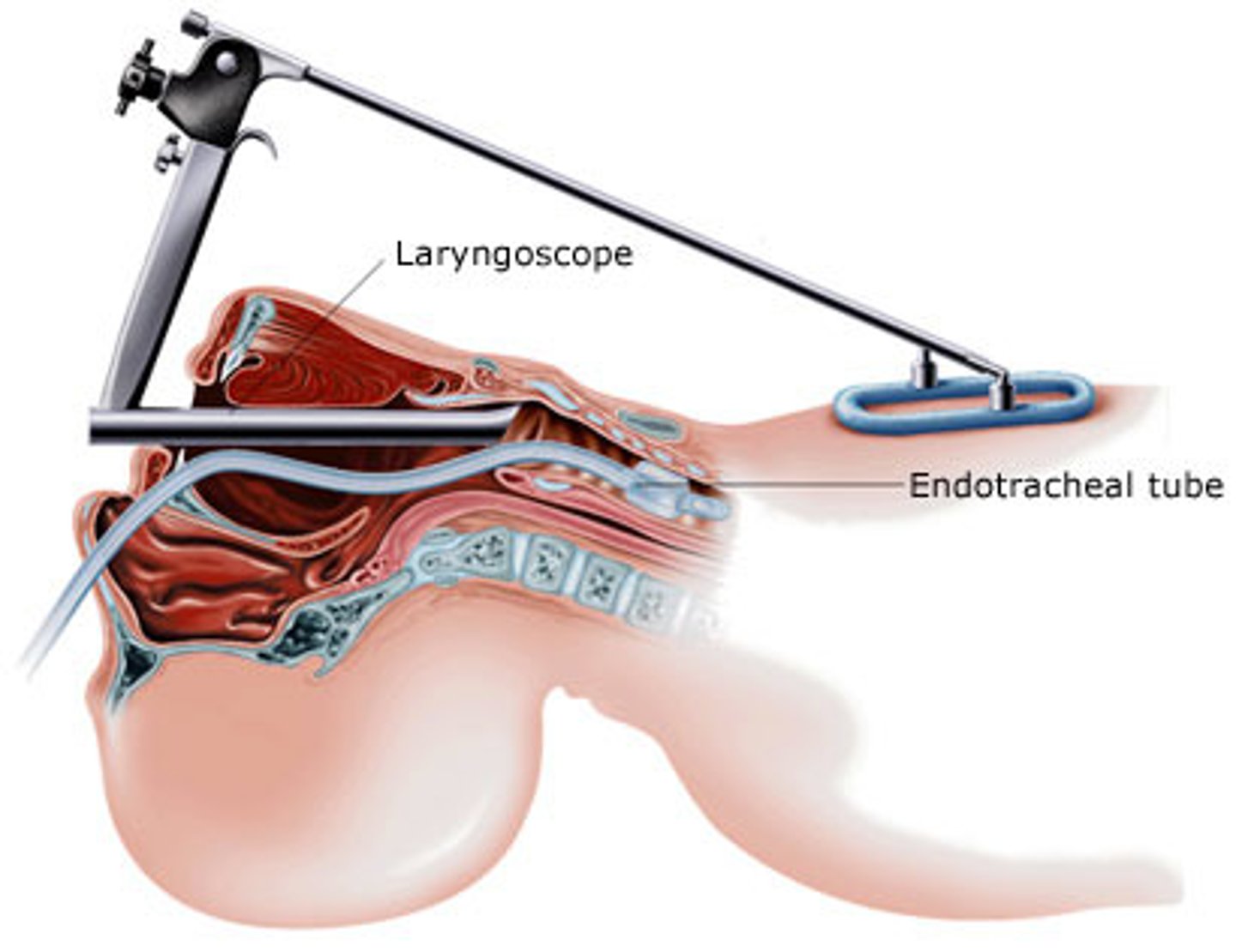
indirect laryngoscopy
Dental mirror
Rigid laryngoscopy
Flexible laryngoscopy
Videostroboscopy
- Allows the human eye to see the vibratory motion of the VF in slow motion.
tracheostomy
surgical creation of an opening into the trachea through the neck

What is the effect of tracheostomy on subglottal airpressure?
Because it redirects the airflow to the stoma, it decreases the subglottal air pressure.
What is the effect of vocal fold masses or paralysis on subglottal air pressure?
Because vocal cords can not be adducted completely, the subglottal air pressure will be decreased.
laryngectomy
surgical removal of the larynx